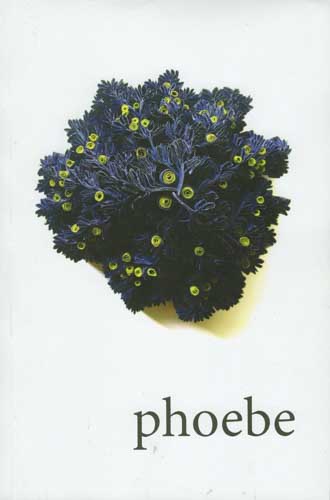Phoebe – Spring 2014
Though I’ve read several issues of Phoebe before, I’m always impressed by how diverse the journal is in terms of genre, aesthetic, and style. This issue features poetry, fiction, nonfiction, comics, and art—a wide range of content that makes for an entertaining mix of reading and viewing material. Though I’ve read several issues of Phoebe before, I’m always impressed by how diverse the journal is in terms of genre, aesthetic, and style. This issue features poetry, fiction, nonfiction, comics, and art—a wide range of content that makes for an entertaining mix of reading and viewing material.
My favorite from the prose was Mike Ingram’s “How To Live Alone,” a nonfiction piece that chronicles the loneliness of a single male narrator. It is a strong emotional piece about coping with the past; the narrator tries to convince himself what is good, what is healthy, what he wants and needs, but it’s not always so easy. Written in second person, the piece does indeed often feel, as the title suggests, like a set of instructions:
Take up smoking. Quit smoking. Take up running. Quit running. Take up smoking again. Try meditation. Try yoga. Try a vegetarian diet. Wear only natural fibers. Become a new person. Become a hundred new people. Become a guinea pig. It’s important to have projects.
Ingram’s essay showcases everything I love most about creative prose: it’s an earnest and honest, straightforward and emotionally resonant. There is no redemption for the narrator, not really, and that lack of resolution only makes the piece stronger.
The poem I loved most in this issue of Phoebe shared similar qualities. Jeff Tigchelaar’s poem, taken from Day Notes: Lawrence, Kansas, chronicles a narrator’s everyday actions, which are often revealing of the unsettled, restless, or cranky mindset of the poem’s speaker:
Ran out into a field and punched a hay bale
Was out for a jog and saw it sitting there and thought
If I go punch that hay bale, at least
I’ll be able to say I punched a hay bale
The speaker ends up interrogating why he or she is unhappy in his or her current surroundings, and the questions he or she asks are indeed powerful ones.
This issue is a very poetry-heavy issue, including not only its usual mix of poems, but also a special annual poetry feature. This year the theme was “frames”; Poetry Editor Darby K. Price defines a “frame” literally as a “rigid structure that surrounds or encloses something” as well as the more abstract definition of something “multidimensional and amorphous . . . systems that allow us to view and understand an ever-complex and often contradictory world.”
Though the poetry here all does interesting work with the concepts of frames, I was drawn immediately to the poems of Elisa Gabbert, whose titles are, literally, framed by brackets, drawing their names from the poems’ first lines. In “[A Walk Helps A Little, A Pause],” Gabbert works in short declarative statements that are seductive in their simplicity and honesty:
A dog rubs its heavy black body
against my thigh,
thrusts its head between my legs.
I hate this automatic shame.
I hate when dogs look like people.
Even if I can’t predict what sort of work I’ll find in Phoebe, it’s one I know I can trust to be quality every time I pick up an issue. This one is highly recommended.
[phoebejournal.com]





